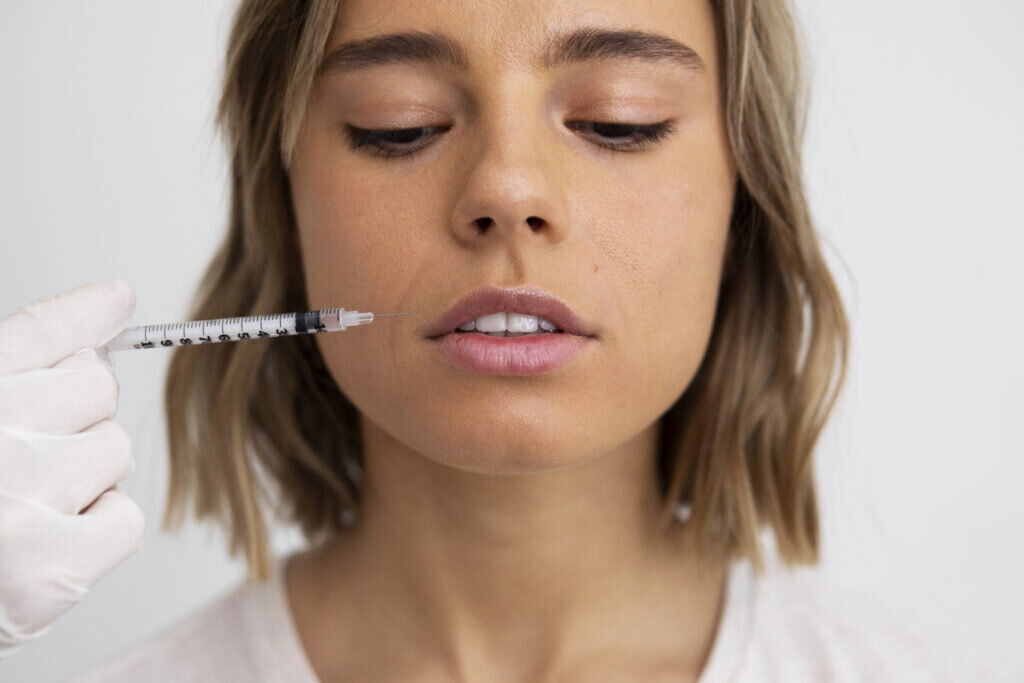Understanding the Risks of Jawline Filler Injections: A Comprehensive Guide
Jawline fillers have gained immense popularity in recent years, especially in cities like Muscat, where individuals seek aesthetic enhancements to achieve a more defined and youthful appearance. However, as with any cosmetic procedure, it is crucial to understand the risks associated with Jawline Fillers Injections Muscat. This comprehensive guide will delve into the potential complications, the importance of choosing a qualified practitioner, and tips for a successful treatment experience.

What Are Jawline Fillers?
Jawline fillers are injectable substances, often made from hyaluronic acid, that are used to enhance the contours of the jawline. These fillers can help create a more chiseled appearance, improve facial symmetry, and address volume loss due to aging. While many people find these results appealing, understanding the potential risks associated with the procedure is essential for making informed decisions.
The Benefits of Jawline Fillers
While our focus is on the risks, it's important to acknowledge the benefits of jawline fillers. These include:
- Improved Facial Contours: Jawline fillers can enhance the natural contours of the face, creating a more defined jawline.
- Youthful Appearance: They can help restore lost volume, making individuals look younger and more vibrant.
- Non-Surgical Option: Jawline filler injections are minimally invasive and offer immediate results with minimal downtime.
Understanding these benefits can help patients weigh their options against the risks involved.
Common Risks Associated with Jawline Filler Injections
1. Allergic Reactions
One of the primary concerns with any injectable treatment, including jawline fillers, is the risk of allergic reactions. Some individuals may be sensitive to the ingredients in the fillers, leading to symptoms such as swelling, redness, or itching at the injection site. Always discuss any known allergies with your practitioner before undergoing the procedure.
2. Infection
Infection is a potential risk associated with any injection. Though rare, bacteria can enter the skin during the injection process, leading to infections that may require antibiotics or other treatments. To minimize this risk, ensure that the procedure is performed in a sterile environment by a qualified professional.
3. Vascular Complications
One of the more serious risks associated with jawline filler injections is the possibility of vascular complications. If the filler is inadvertently injected into a blood vessel, it can lead to severe complications, including tissue necrosis or even blindness. This is why it’s crucial to choose a practitioner who is experienced in facial anatomy and knows how to minimize these risks.
Importance of Choosing a Qualified Practitioner
When considering jawline fillers in Muscat, selecting a qualified and experienced practitioner is paramount. Here’s why:
1. Expertise in Facial Anatomy
A skilled practitioner understands the complex anatomy of the face and can avoid injecting into sensitive areas. They will have the knowledge to minimize risks and manage any complications that may arise.
2. Personalized Consultation
A qualified practitioner will provide a comprehensive consultation, discussing your goals, expectations, and any potential risks associated with the procedure. They will tailor the treatment plan to your specific needs and facial structure.
3. Reputation and Reviews
Always check the practitioner's credentials and reviews from previous clients. Positive testimonials and before-and-after photos can provide insight into their skill level and the results you can expect.
Pre-Treatment Considerations
1. Consultation and Medical History
Before undergoing jawline filler injections, a thorough consultation with your practitioner is essential. Discuss your medical history, including any previous cosmetic procedures, allergies, or medical conditions that may affect your treatment.
2. Avoiding Blood Thinners
To minimize the risk of bruising and swelling, it's advisable to avoid blood thinners, such as aspirin or certain supplements, at least a week before your treatment. Your practitioner will provide specific instructions to help prepare you for the procedure.
3. Setting Realistic Expectations
Understanding what jawline fillers can and cannot achieve is crucial. While they can enhance your appearance, results may vary based on individual factors. Setting realistic expectations can lead to greater satisfaction with the outcome.
Post-Treatment Care
1. Follow Aftercare Instructions
After receiving jawline filler injections, follow your practitioner's aftercare instructions carefully. This may include avoiding strenuous exercise, sun exposure, and certain skincare products for a specified period.
2. Monitoring for Complications
Keep an eye on the injection sites for any signs of infection or unusual swelling. If you experience severe pain, persistent swelling, or other concerning symptoms, contact your practitioner immediately.
3. Schedule Follow-Up Appointments
Follow-up appointments are essential for monitoring the results and addressing any concerns. Your practitioner can assess your progress and make any necessary adjustments to achieve the desired look.
Conclusion
Jawline filler injections can offer remarkable benefits for enhancing facial contours, particularly in Muscat, where aesthetic treatments are increasingly popular. However, understanding the risks associated with this procedure is vital for making informed decisions. By choosing a qualified practitioner and following pre- and post-treatment guidelines, you can help ensure a safe and satisfying experience. Always prioritize safety and do thorough research before undergoing any cosmetic procedure.
